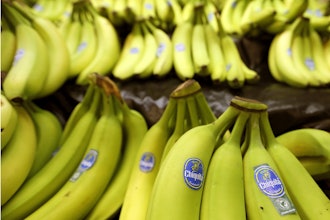
Agriculture Secretary Tom Vilsack announced that USDA is awarding a record-breaking $14.3 million in Patrick Leahy Farm to School Grants to 154 projects in 43 states, the District of Columbia, Guam and Puerto Rico. These investments will help 1.9 million children eat more tasty, nutritious foods in school, while supporting farmers and producers in their local and regional communities.
“Farm to School is a huge win for children, schools, farmers, producers and communities,” said Vilsack. “When schools have access to fresh, local food options with homegrown flavor, they can serve delicious, healthy dishes that kids are excited to eat, while also supporting the local economy. These grants continue our work to address both food insecurity and nutrition insecurity, ensuring that we’re not only feeding kids, we’re feeding them well.”
This investment in the Farm to School Program supports the Biden-Harris administration's National Strategy on Hunger, Nutrition, and Health to end hunger and increase healthy eating by year 2030.
The Patrick Leahy Farm to School Grant Program helps child nutrition program operators incorporate local foods into meals served through USDA’s National School Lunch Program, Child and Adult Care Food Program and SUN Programs: USDA’s Summer Nutrition Programs for Kids.
Farm to school opens opportunities for children to learn about nutrition and agriculture through hands-on experiences, such as planting, watering, and harvesting fruits, vegetables, and herbs. The program can also provide a pathway for more children to achieve nutrition security, which is the consistent and equitable access to healthy, safe and affordable food.
USDA continues to show its commitment to equity by reaching historically underserved and marginalized communities through this year’s farm to school grants:
- Fifty-four percent of students served by these projects are eligible for free or reduced-price school meals.
- More than one-third (35%) of awarded projects serve rural areas.
- Members of communities of color lead 40 percent of the awarded organizations, all with projects serving those same communities.
- Eight projects are led by and serve American Indian or Alaska Native communities.
Producers can receive the grants for their farm to school projects, too. Three agricultural producers are among this year’s grantees.
More than 67,000 schools currently participate in farm to school. More information about the impact of these grants across the country is available on the Farm to School website.
Since the Patrick Leahy Farm to School Program’s inception in 2013, the Department has awarded more than $98 million in Farm to School Grants, funding more than 1,200 projects across all 50 states, the District of Columbia, U.S. Virgin Islands, Guam and Puerto Rico. These projects have reached more than 28 million students. For more information on how your community can get involved with Farm to School activities, please visit the FNS website.
The Patrick Leahy Farm to School Program is one of many ways that USDA supports states and school nutrition professionals to provide kids with nutritious school meals that support their health and well-being. Through a variety of programs and initiatives, USDA has provided nearly $13.7 billion in financial support to schools across the country since January 2021. This support includes a recent award of $10 million in grants through USDA partners – Full Plates Full Potential and the Illinois Public Health Institute – to support innovation in the school meals marketplace in Northeast and Midwest regions of the country by incentivizing collaboration between schools, the food industry, and other stakeholders, as part of the Healthy Meals Incentives Initiative. The initiative empowers schools to serve delicious and nutritious meals through a series of investments supporting both schools and the school meal supply chain.





















